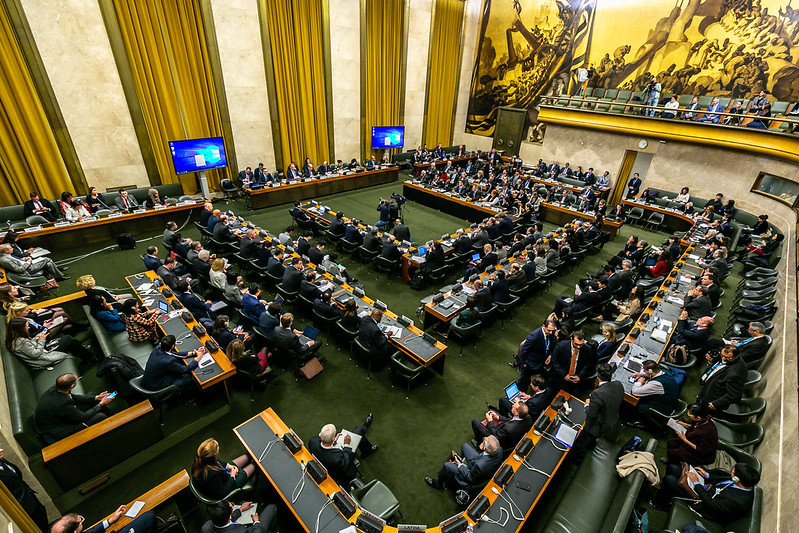Строка навигации

UNITED STATES INFORMS CONFERENCE ON DISARMAMENT OF DECISION TO DISABLE FAILING SATELLITE

Ambassador Christina Rocca of the United States announced United States plans to disable a failing National Reconnaissance Office satellite at a meeting the Conference on Disarmament this morning.
Ms. Rocca said the President of the United States of America had authorized the Department of Defense to attempt the engagement of an inoperable National Reconnaissance Office Satellite, which was currently in a decaying orbit. The President had determined that protecting the possible risk to human life was paramount; the highly toxic nature of the satellite's fully fuelled hydrazine tank, which would likely survive in a natural re-entry, was the key factor influencing that decision.
The United States had recently modified three SM-3 missiles and three United States Navy ships to perform the mission, Ms. Rocca continued. The United States anticipated rupturing the fuel tank, and causing the hydrazine to dissipate, so that it would no longer pose a threat to human life. The United States would also choose the time and location of the engagement to maximize chances of ensuring that the resulting debris would re-enter quickly and thus not pose a danger to satellites and peaceful space operations and to minimize the chance that any initial debris re-entering after the engagement would impact a populated area.
Ms. Rocca said that, if the engagement failed, the satellite was expected to make an uncontrolled re-entry into the Earth's atmosphere on or about 6 March 2008 in any region on the Earth's surface between 58.5 degrees North and 58.5 degrees South latitudes. In the event, the United States was examining options for consequence management to mitigate the hazards that could be created if a fully fuelled hydrazine tank were to land in an inhabited area.
Ms. Rocca stressed that, whether the engagement succeeded or failed, the United States was prepared to offer assistance to Governments to mitigate the consequences of any satellite debris impacts on their territory, under the terms of he 1972 Convention on international Liability for Damage Caused by Space Objects, to which it was a party.
Ms. Rocca further emphasized that all United States actions regarding this matter would be consistent with the provisions of the 1967 Outer Space Treaty. The United States transparency in notifying foreign Governments and the broader international community was consistent with its commitment to safe and responsible space operations. This extraordinary engagement was an emergency response to prevent the possible loss of life. It was not part of an anti-satellite development and testing programme, and the United States did not intend to retain the technical capability resulting from the modifications required to carry out the engagement.
The next plenary of the Conference will be held at 10 a.m. on Tuesday, 19 February, under the Presidency of Turkey.
For use of the information media; not an official record
DC08012E
